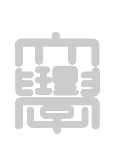|
 |
Rodent models of chronic restraint stress (CRS) are often used as simple models of depressive disorder. However, these models of stress have been mainly developed in rats, and the behavioral phenotypes of CRS models are still controversial. In this study, we compared the physiological and behavioral responses of C57BL/6J (B6) and BALB/c mice, which are commonly used in genetic and behavioral studies, to CRS. In addition to measuring physiological parameters and the levels of corticosterone (a stress hormone) in response to stress, we also examined changes in the levels of testosterone (an anti-stress hormone), which have rarely been studied in stressed mice. The mice were exposed to CRS for 6 h a day for 21 days. In both B6 and BALB/c mice, CRS elicited several physiological stress responses, including decreased body weight gain and changes in the tissue weights of stress-related organs. Accumulated corticosterone in the hair was measured, and BALB/c mice had significantly greater levels than control mice and B6 mice after CRS. On the other hand, in the case of accumulated testosterone in the hair, both B6 mice and BALB/c mice showed significantly higher concentrations than control mice, but the degree of change was not different between the two strains. In the sucrose preference test, BALB/c mice, but not B6 mice, showed anhedonia-like behavior after CRS. However, neither strain showed depressive-like behavior in the forced swim or tail suspension test. Our results show that the physiological and behavioral stress responses of BALB/c mice are greater than those of B6 mice, although anti-stress responses to CRS are similar in both strains. This suggests that BALB/c mice are likely to be advantageous for use as a CRS-induced depression model.
Research papers (academic journals)






